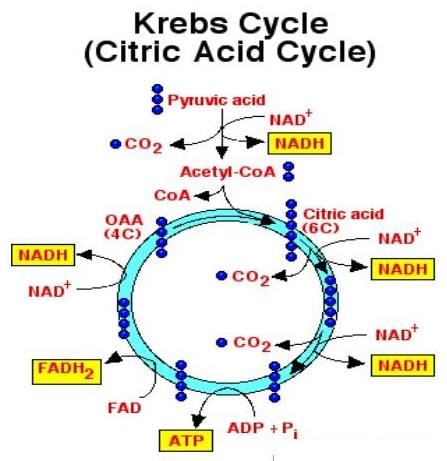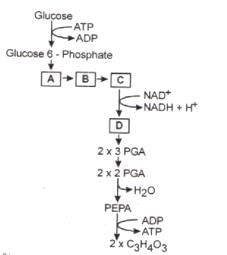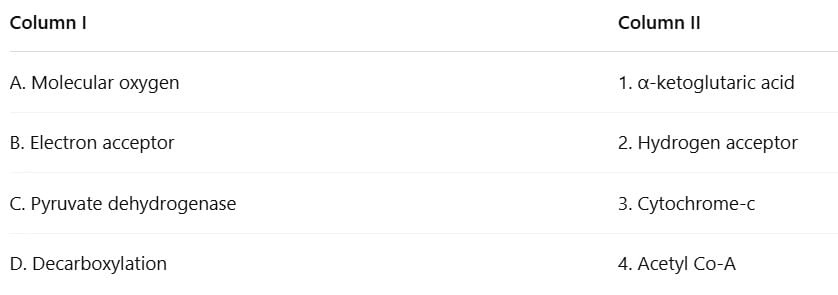Test: Respiration in Plants - 1 - NEET MCQ
20 Questions MCQ Test - Test: Respiration in Plants - 1
During anaerobic respiration less energy is produced than aerobic respiration because:
The enzyme that interconnects the glycolysis and kreb cycle is:
In plants, the gaseous exchange take place in:
(a) Stomata
(b) Roots
(c) Stems
(d) Lenticels
Which of the following statements are correct?
(A) The oxidation of pyruvic acid molecules formed in glycolysis occurs inside the mitochondria.
(B) Acetyl CoA is a 3-carbon compound.
(C) Under anaerobic conditions, the pyruvic acid formed during glycolysis is reduced to either ethyl alcohol or lactic acid.
(D) Acetyl CoA molecules enter into cyclic reactions during Calvin cycle.
Which of the following reactions is catalysed by the enzyme phosphofructokinase?
In animal cells, the first stage of glucose break down is:
In kreb cycle, isocitric acid is converted into α-keto glutaric acid by:
Cytochrome c is the first electron acceptor in the electron transport chain. Which of the following statements is false about cytochrome c?
Acetyl CoA forms a 6-C compound after combining with
Which of the following is performed by coenzyme A?
Which one is NOT a preparatory phase or energy spending phase of Glycolysis:
What is the number of ATP molecules that can be regarded as a net gain during aerobic respiration of one molecule of glucose?



















